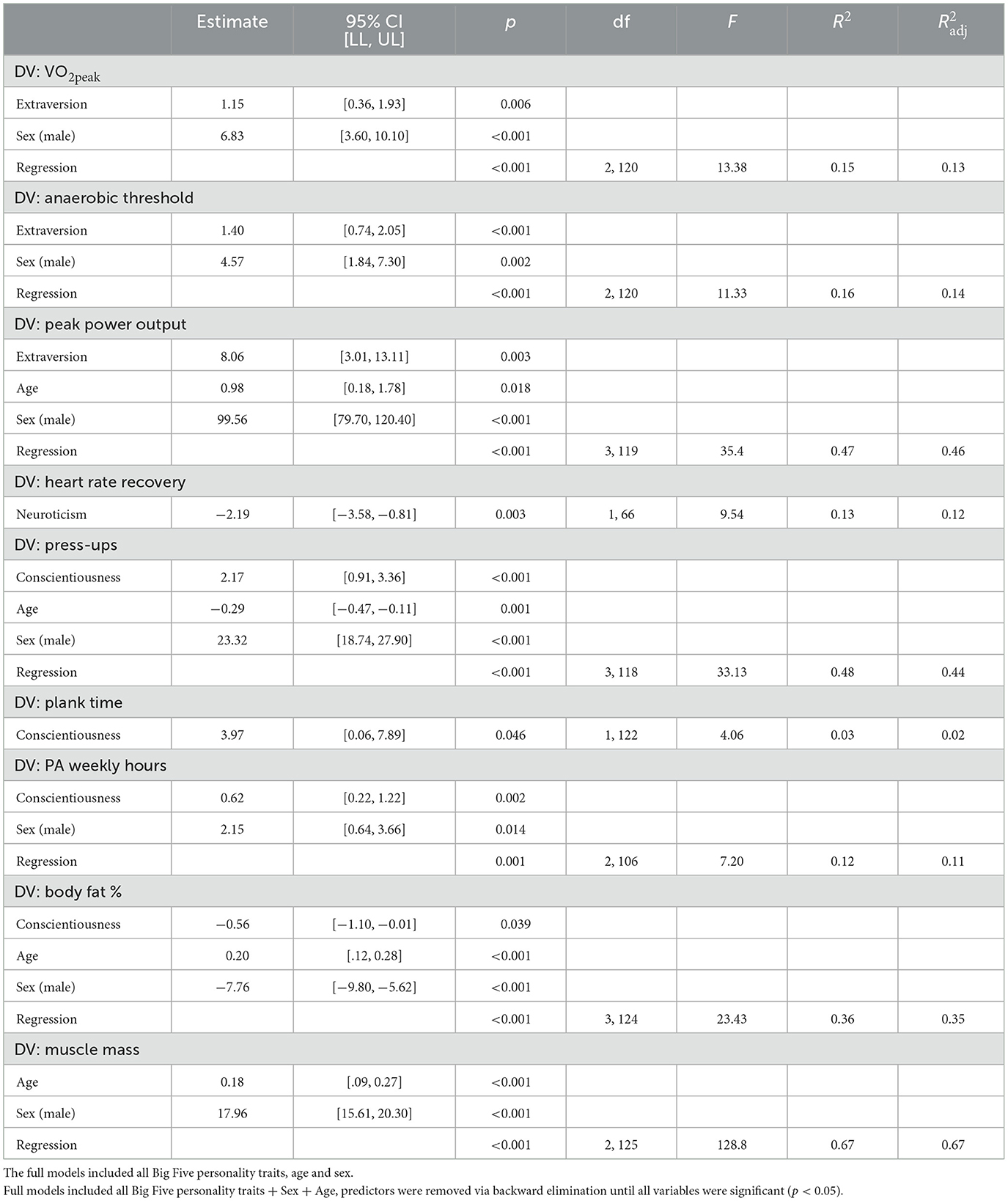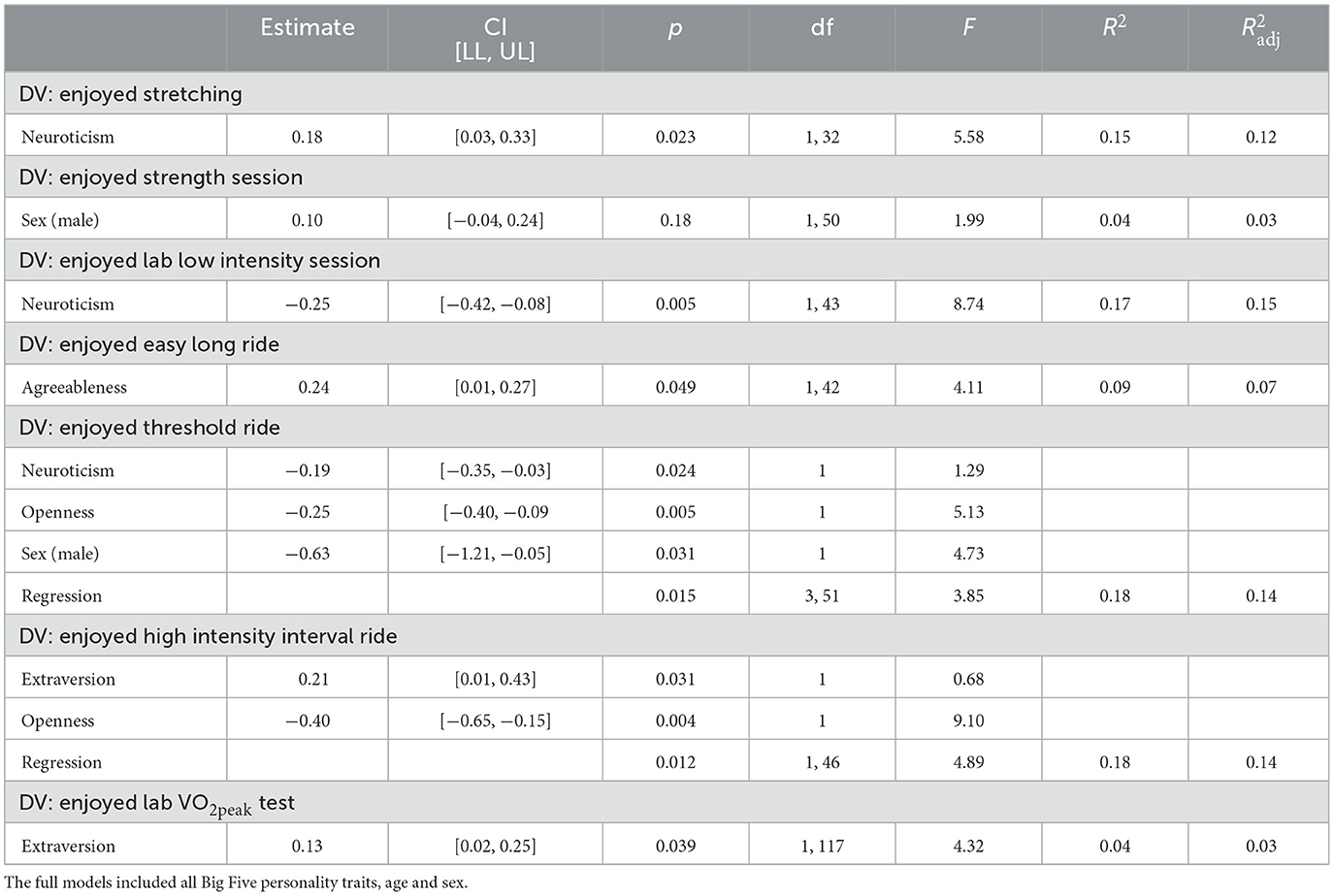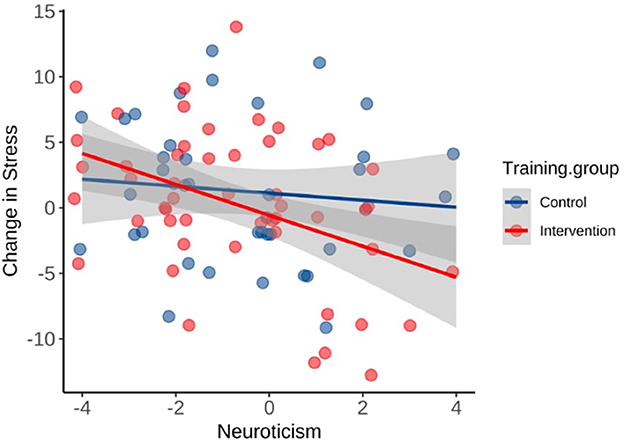- 1Institute of Sport, Exercise and Health, University College London, London, United Kingdom
- 2Institute of Cognitive Neuroscience, University College London, London, United Kingdom
by Ronca, F., Tari, B., Xu, C., and Burgess, P. W. (2025). Front. Psychol. 16:1587472. doi: 10.3389/fpsyg.2025.1587472
In the published article, there was an error in the author list.
Author Benjamin Tari was erroneously assigned as corresponding author. The correct corresponding author is Flaminia Ronca.
There was a mistake in Tables 3, 4 as published. Both tables are missing the columns for estimates and confidence intervals. There was a mistake in the captions of Tables 3, 4 as published. A clarification has been added. The corrected Tables 3, 4, along with their updated captions appear below.

Table 3. Multiple linear regression output for each component of baseline physical fitness following backward elimination.

Table 4. Multiple linear regression outputs predicting enjoyment of each exercise session with personality traits following backward elimination.
There was an error in the Results section: Figure 4 was omitted. Figure 4 and its corresponding information are provided below.
Figure 4 should be cited in the following sentence, at the end of the Results section, under “Intervention Outcomes”.
Furthermore, participants who scored high on neuroticism reported a greater decrease in stress after the intervention, F(1, 49) = 9.94, p = 0.003, = 0.15 (Figure 4).
Figure 4 and its caption appear below.

Figure 4. Relationship between neuroticism scores and changes in stress after the 8-week period. The prediction was significant in the intervention group only (R2 = 0.17, p = 0.003).
The original version of this article has been updated.
Publisher's note
All claims expressed in this article are solely those of the authors and do not necessarily represent those of their affiliated organizations, or those of the publisher, the editors and the reviewers. Any product that may be evaluated in this article, or claim that may be made by its manufacturer, is not guaranteed or endorsed by the publisher.
Keywords: Big Five, physical activity, neuroticism, exercise tailoring, fitness
Citation: Ronca F, Tari B, Xu C and Burgess PW (2025) Correction: Personality traits can predict which exercise intensities we enjoy most, and the magnitude of stress reduction experienced following a training program. Front. Psychol. 16:1663653. doi: 10.3389/fpsyg.2025.1663653
Received: 10 July 2025; Accepted: 17 July 2025;
Published: 08 August 2025.
Edited and reviewed by: Aleksandra Maria Rogowska, University of Opole, Poland
Copyright © 2025 Ronca, Tari, Xu and Burgess. This is an open-access article distributed under the terms of the Creative Commons Attribution License (CC BY). The use, distribution or reproduction in other forums is permitted, provided the original author(s) and the copyright owner(s) are credited and that the original publication in this journal is cited, in accordance with accepted academic practice. No use, distribution or reproduction is permitted which does not comply with these terms.
*Correspondence: Flaminia Ronca, Zi5yb25jYUB1Y2wuYWMudWs=
†ORCID: Flaminia Ronca orcid.org/0000-0001-7423-1088
Benjamin Tari orcid.org/0000-0003-3751-3179
Paul W. Burgess orcid.org/0000-0002-6894-6658
 Flaminia Ronca
Flaminia Ronca Benjamin Tari
Benjamin Tari Cian Xu
Cian Xu Paul W. Burgess
Paul W. Burgess